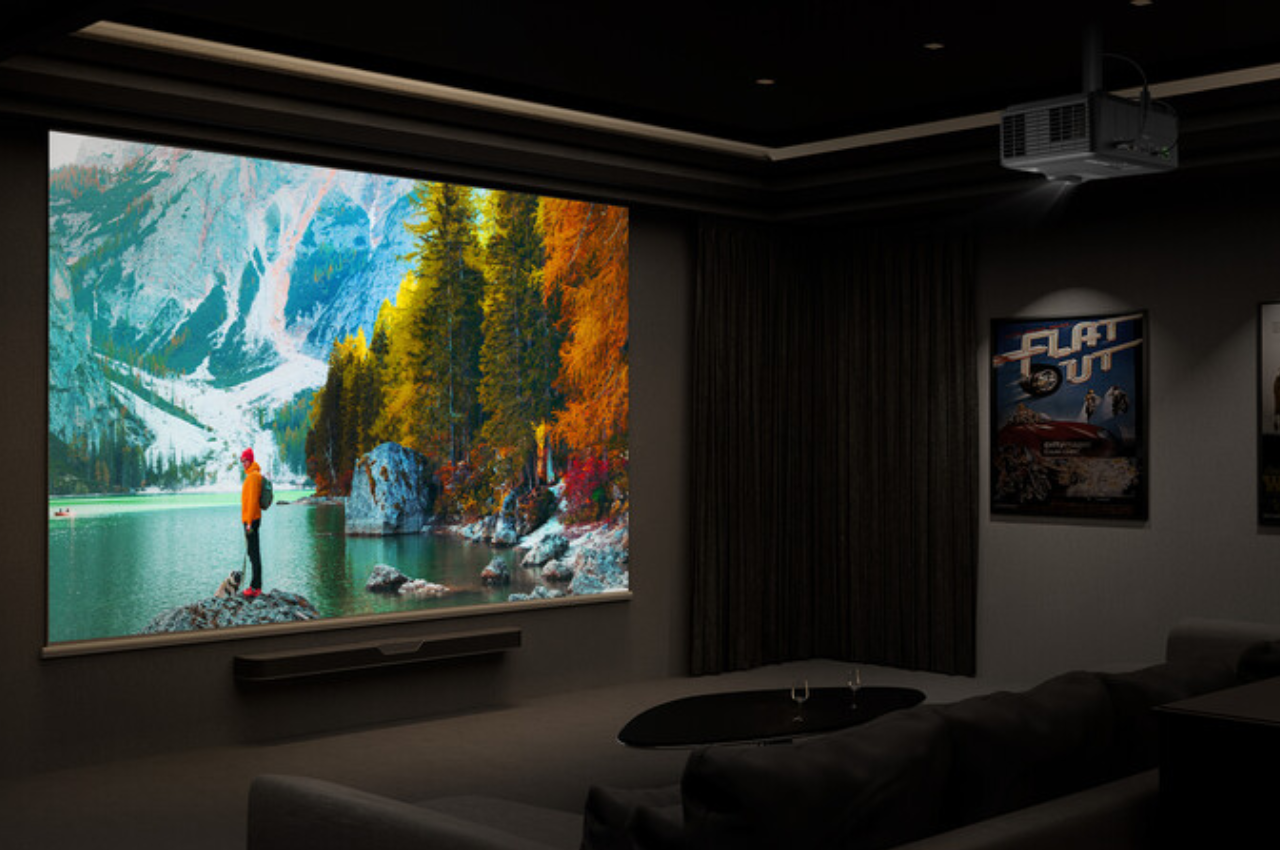Projector resolution is a critical feature when selecting the right device for your needs. It determines how clear a projected image will be based on the number of pixels displayed. Common projector resolution ranges from SVGA (800 x 600 pixels) to 4K UHD (3840 x 2160 pixels).
What’s the best projector resolution for you? Keep reading to learn more about projector resolution or find the projectors for your needs here.
Choosing the right resolution for your projector is essential to getting the most out of your purchase. Let’s take a closer look at what projector resolution means and how you can determine the best fit for your needs.
What Is Projector Resolution?
Resolution, or “native resolution,” is defined by the number of pixels used to create an image, expressed as the number of horizontal pixels by vertical pixels. Higher resolution means more pixels and sharper images. Aspect ratio, the ratio between image width and height, is also important, with common ratios being 4:3, 16:10, and 16:9.

Common Projector Resolutions:
- SVGA (Super Video Graphics Array): This resolution is 800 x 600 pixels, with a 4:3 aspect ratio. SVGA is one of the earliest resolution standards.
- XGA (Extended Graphics Array): This is an improvement on the SVGA standard. It has the same 4:3 aspect ratio; however, it provides a resolution of 1024 x 768 pixels.
- WXGA (Wide Extended Graphics Array): Building on the previously outlined standards, WXGA carries a resolution of 1280 x 800 pixels, resulting in a 16:10 aspect ratio. This ratio is associated with widescreen images as there are nearly twice as many horizontal pixels as there are vertical pixels. WXGA is the most common resolution with entry-level projectors.
- FHD (Full High Definition): Also known as 1080p resolution, this translates to 1920 x 1080 pixels and with an aspect ratio of 16:9. This is the most common projector resolution on the market today and standard for high-definition content.
- WUXGA (Widescreen Ultra Extended Graphics Array): This stands for “widescreen ultra extended graphics array.” It translates to 1920 x 1200 resolution and an aspect ratio of 16:10.
- 4K UHD (Ultra High Definition): The highest quality resolution readily available on the market today, 4K UHD comes in at 3840 x 2160 pixels. In professional circles, 4k UHD is commonly referred to as 4k x 2k.
It’s worth noting that a few 8k projectors are available – or in development – but it’s debatable whether there’s any value in this extremely high resolution. Also, there isn’t much 8k content out there. Read more about the comparison of 4K versus 8K in TVs here.
Maximum Resolution
Something else to consider is a projector’s “maximum resolution.” In the previous section, we focused on “native resolution,” which is the total physical pixel count in a given resolution. Maximum resolution, on the other hand, is taken to refer to the highest signal resolution that a projector is built to process and display.
When the resolution of the content doesn’t match the native resolution of a projector, “scaling” occurs. This is when the projector adjusts the picture to match the native resolution. For example, if a standard definition video is streamed through an HD projector, the device will have to enlarge the signal to display the image fully. On the other hand, if HD content is streamed through an XGA projector, then the device will compress the image into fewer pixels.
Scaling is a process of approximation, meaning that the projector is estimating how the image would look if the content were shown in its native resolution. Since the projector isn’t able to add additional detail to the original signal, it works to approximate how the image should look, while minimizing any loss of quality.
Today, however, scaling engines have gotten to a point where scaled media content looks as good as if it were shown in its native format. Unfortunately, these improvements don’t apply to signals from computers.
If you’re looking to display PowerPoint presentations or web pages using a projector, it’s best to set your computer’s output resolution to match the projector’s native resolution.
Factors to Consider When Choosing a Projector Resolution
When evaluating which projector resolution best suits your needs, consider the level of detail required in the images, how often you’ll use the projector, and the aspect ratio of the content. To make things easier, start by identifying where you’ll be using the projector. Below, we provide tips on choosing the right projector for different usage scenarios.
Projectors for Business
In business settings, versatility is crucial. Projectors must handle various multimedia formats and presentations, accommodating aspect ratios from 4:3 to 16:9, and the new 21:9. The 21:9 aspect ratio is particularly useful in meeting rooms and is compatible with Microsoft Teams’ Front Row mode. When selecting a projector resolution for business use, consider your specific needs and the type of content you’ll be presenting. High-resolution options like WUXGA (1920 x 1200) or 1080p (1920 x 1080) are suitable for most business presentations, offering sharp images and clarity. If you require intricate graphics or large screens, consider a 4K UHD (3840 x 2160) projector.
Are you interested in learning more about projectors for business? Take a look at our complete guide here.
Projectors for Classrooms
Educational environments require versatile classroom projectors that can handle multimedia and presentations, typically in a 16:9 aspect ratio. Ceiling-mounted projectors are often preferred to save space and ensure a clear line of sight.
For classrooms of 1-50 people, WXGA (1280 x 800) or 1080p (1920 x 1080) resolutions are suitable. For immersive classrooms or those frequently displaying high-quality multimedia content, consider using 4K UHD (3840 x 2160) projectors to enhance the visual experience.
Projectors for Home
For home entertainment such as watching movies or gaming, projector resolutions like 1080p (1920 x 1080) and 4K UHD (3840 x 2160) are ideal for high-definition content. Some recommended models include the M10 RGB Laser Projector and X2-4K.
If you’re looking for some inspiration or creative ideas to use your projector at home, you can check out this article.

Projector for Outdoor Movies
For outdoor or portable use, you need a projector that can handle varying lighting conditions and is easy to transport. Resolutions like 720p (1280 x 720) and 1080p (1920 x 1080) are often sufficient but consider higher lumens for better visibility in bright environments. Portable models like the ViewSonic M1 Pro and M2W are excellent choices for these scenarios.

Final Thoughts
Of all the components that go into choosing a projector for your home or business, one of your top considerations should be projector resolution. This is the number of pixels (individual points of color) that are used to create an image. It’s expressed as the number of pixels on the horizontal axis, by the number of pixels on the vertical axis.
While there are a variety of standards associated with projector resolutions, the ones you’ll want to keep an eye out for include WXGA, FHD, WUXGA, and 4K UHD. In order to choose the right standard for your needs, you need to consider the type of media you will be showing with the projector (videos, PowerPoint presentations, etc.), and the general size of the images and picture quality.
Now that you know how to choose the right resolution for your projector, you can easily find the right projector for your home or business.